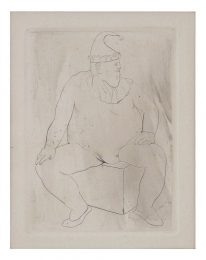

1881 - 1973
The full name of Pablo Picasso was Pablo Diego José Francisco de Paula Juan Nepomuceno María de los Remedios Cipriano de la Santísima Trinidad Ruiz y Picasso.
Picasso art broke historical traditions like no other artists before his time (except for his contemporary Cezanne – yet this is debatable). Known for challenging notions of what art should be, how it could be looked at (perspective) and understood through channeling emotions through colours and exploring new ways of incorporating other media, Picasso’s history of painting in terms of style and subject is well spread out.
Pablo Picasso artwork varied in subjects from prostitutes, Le Demoiselles d’ Avignon, to self-portraits and portraits of his lovers, Marie Therese Walter (who is portrayed in harsh bright colours) and Dora Maar (who is portrayed through curvilinear lines and soft pastel colours), to Pablo Picasso’s most famous painting Guernica, and even still lifes. Pablo Picasso style of art therefore cannot be narrowed down to one particular time.
Yet painting was not his only means of expression, especially in his notable analytical and synthetic cubism phases, 1908-1921 (Analytical cubism is best understood that the subject of the painting is relatively obvious in representation as opposed to Synthetic Cubism, where the end result is a subject that has been highly fragmented almost to the point of total abstraction). It was around the year 1912 that Picasso introduced the use of collage – combining different materials together, not only in his paintings, but in his sculptures as well, for example the sculpture Bull’s Head. Thus, while many admire Picasso for his cubist works, he too is well known for his neoclassical paintings, such as Mother and Child by the Sea, as well as for his sculptures (for example Bull’s Head Above), which occurred almost two decades after his cubism period ended.
This too was around the end of WWII. It was after the war that he turned to children’s and primitive art as a source of inspiration, seen through his ceramic works with playful faces and bright colours, which too could be seen in his paintings and drawings of the time.
When did Pablo Picasso die? At the age of 91, Picasso died in Mougins, France, in 1973. According to reports, he died of heart failure as he and his wife were enjoying a dinner party with friends.
Read the Blogs: